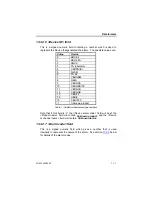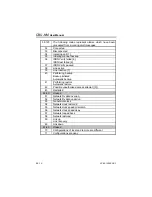
CBU-NM
User Manual
ii
80-60100000-02
12–2
The alarms will still be logged, but will not be shown in that window until
the appropriate filters are removed. See Chapter 3 for more details.
12.5 Link
A Link is an internal software component that allows PCNC to
communicate with the network via the ports at the back of the computer.
The Control Link gathers alarms from and sends commands to local
devices (see Chapter 4 - Communications).
The Remote Link receives alarms from remote devices, but cannot be
used to send commands. However, commands can be issued to remote
devices via the Control Link, using the Direct connection facility (see
Section
4.5.2
- Remote Direct Connection).
The Auxiliary Link is used for the Auxiliary Terminal to talk to devices
that do not produce alarms, or are unsuitable for connection to the other
Links.
The SNMP Link, if installed, allows PCNC to communicate with
Cabletron devices over TCP/IP using separate TCP/IP support software.
ALERTs can be received in the form of SNMP traps, and alarms from
any device can be forwarded in Trap format to a separate application.
12.6 Log
A Log is a record of all valid alarms, stored in the order in which they
were received. It is a view of items stored in the Alarm Database, as
displayed in the various Alarm Log windows. The database can be
saved to a disk file (known as an ‘Archive’) which can be examined later.
12.7 Menu bar
Towards the top of the PCNC Main window is a row of menu titles.
Clicking on one of these will bring down a set of related commands, from
which you can select the one you want. All PCNC’s commands can be
accessed in this way, and some are also available from the toolbar
and/or Speed Menus. An ellipsis (
…
) after the entry indicates that the
command will invoke a dialogue box and does not execute immediately.
















































